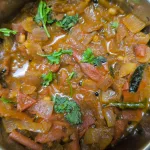

Join the Newsletter
Dive into quick, nutritious recipes, expert health tips, local food finds, and the latest in nutrition. Let’s explore healthier living together!
Healthy Eating 101: A Clear Vitamin and Food Chart for Daily Use
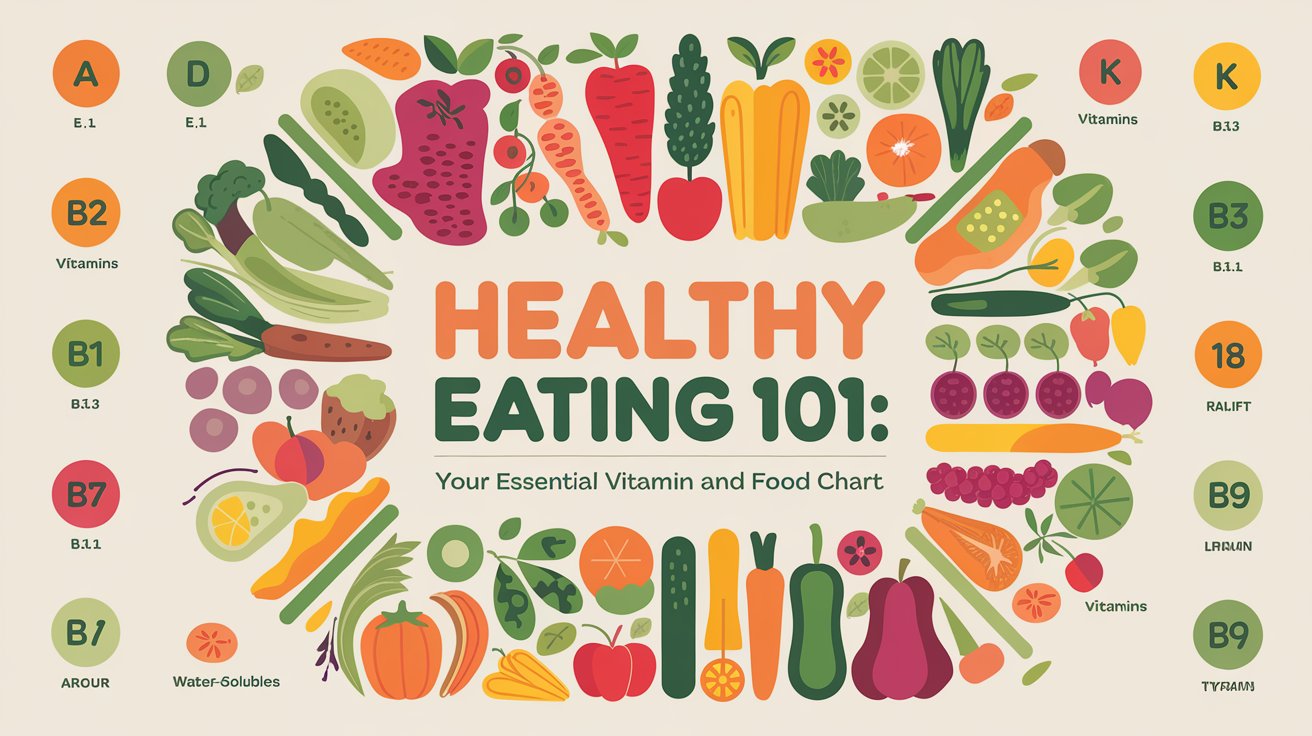
Affiliate Disclosure
Before reading this post, please be aware that some links in this article are affiliate links. This means that if you click on one of these links and make a purchase, we may earn a commission at no additional cost to you. We only promote products and services that we believe will be beneficial to our readers.
For more information, please read our full Affiliate Disclosure.
No products found.
Eating healthy is more than just a buzzword; it’s a lifelong commitment to fueling your body with the essential nutrients it needs to function optimally. With an ever-growing array of diet plans, supplements, and conflicting advice, it can be challenging to know where to start. That’s why having a clear understanding of vitamin and food chart, minerals, and the right food choices can help you navigate the path toward better health. In this comprehensive guide, we will explore everything you need to know about healthy eating, focusing on how vitamins and nutrients should fit into your daily routine.
What Are Vitamins and Why Are They Essential?
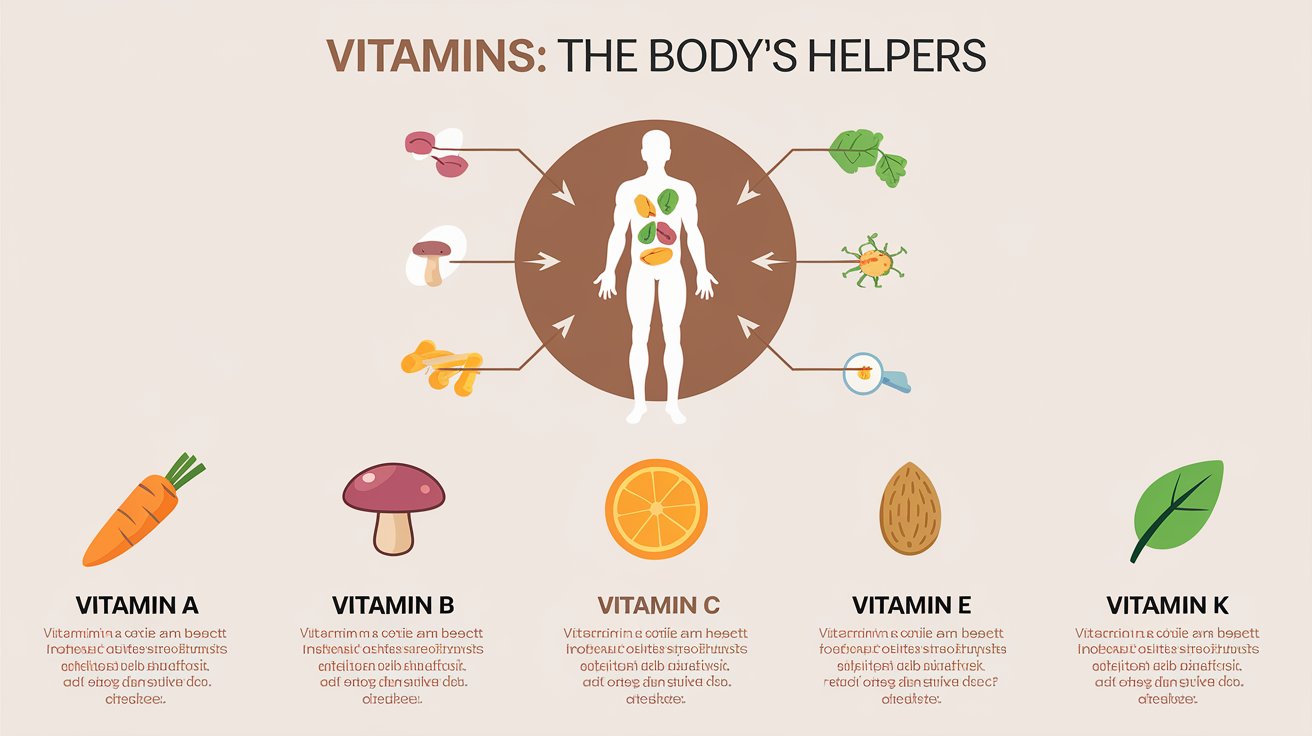
Vitamins are organic compounds that your body needs to grow, function, and remain healthy. They play a critical role in many physiological processes, such as strengthening your immune system, repairing cellular damage, and supporting brain function. There are two categories of vitamins: fat-soluble and water-soluble.
- Fat-soluble vitamins (Vitamins A, D, E, and K) are stored in the body’s fatty tissues and liver. You don’t need to consume these vitamins every day, but a deficiency can lead to health problems over time.
- Water-soluble vitamins (Vitamin C and B-complex vitamins) are not stored in the body, so they must be replenished regularly through your diet. These vitamins are responsible for a variety of functions, such as boosting immunity and providing energy.
Incorporating both types of vitamins into your daily meals is essential for maintaining a balanced diet and overall health.
The Building Blocks of Healthy Eating
A healthy diet consists of macronutrients (proteins, carbohydrates, and fats) and micronutrients (vitamins and minerals). Every component has its own distinct function in supporting overall health.
- Proteins: Essential for building and repairing tissues, proteins also produce enzymes and hormones. Lean meats, fish, beans, and legumes are good sources.
- Carbohydrates: The body’s main energy source. Prioritize complex carbs such as whole grains, fruits, and vegetables instead of refined sugars.
- Fats: While often seen negatively, fats are crucial for absorbing vitamins, hormone production, and maintaining cell membranes. Select beneficial fats from sources like avocados, nuts, seeds, and olive oil.
The goal is to create a balanced diet that includes all these elements in appropriate proportions. Combining macronutrients with vitamins and minerals provides a more complete nutrition profile that supports both immediate energy needs and long-term health.
Daily Vitamin Requirements by Age and Gender
Vitamin needs vary by age and gender due to differences in physiology and life stages. For instance, growing children require more vitamins for development, while adults need vitamins to maintain bodily functions and prevent age-related decline.
- Children: Vitamins such as A, D, and C are essential for growth and immune support.
- Adults: Adequate intake of B vitamins, Vitamin D, and calcium is important for energy and bone health.
- Seniors: As people age, their bodies require more Vitamin D and calcium to prevent osteoporosis. Supplements may be necessary to meet these needs.
Understanding these differences ensures that you or your loved ones are getting the right nutrients at every stage of life.
Fat-Soluble vitamin and food chart: Functions and Food Sources
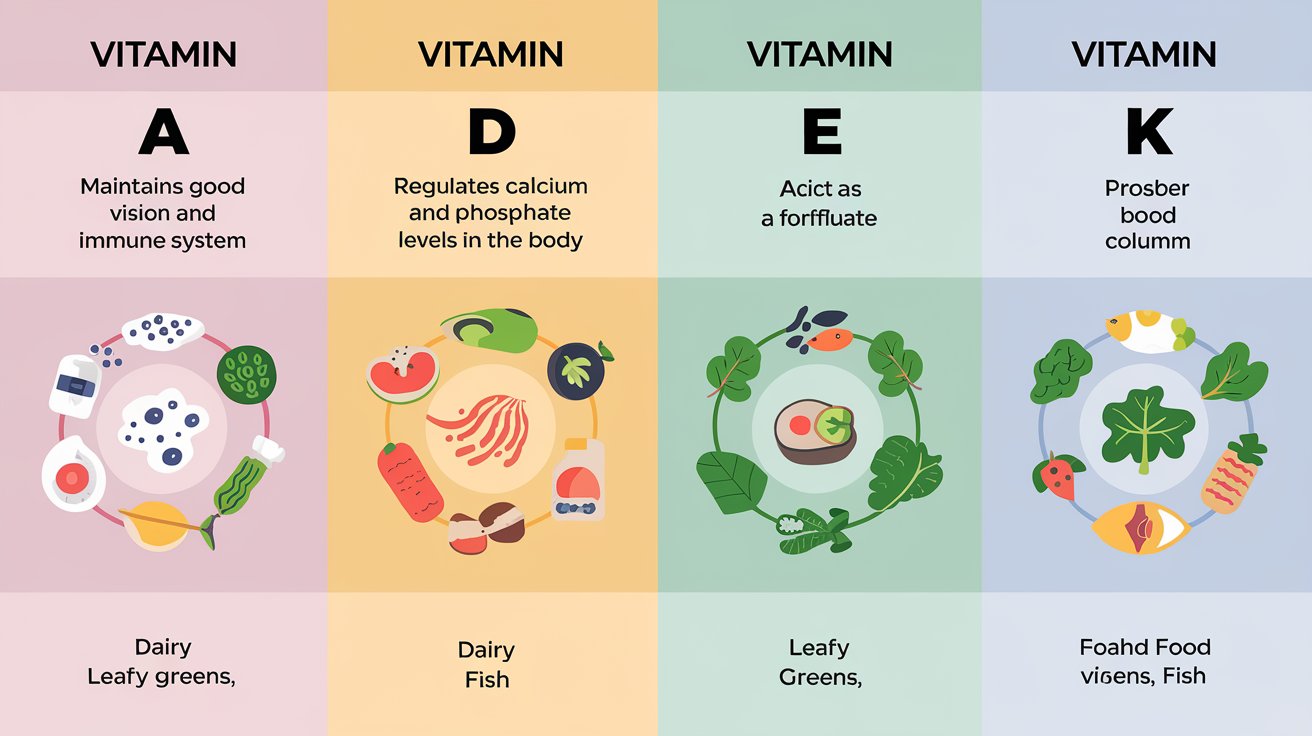
A
- Functions: Supports vision, immune health, and skin maintenance.
- Sources: Carrots, sweet potatoes, spinach, and dairy products are rich in Vitamin A.
D
- Functions: Enhances calcium absorption and promotes bone health.
- Sources: Sunlight exposure is a natural source. You can also get Vitamin D from fatty fish like salmon, as well as fortified milk and cereals.
E
- Functions: Acts as a potent antioxidant, protecting cells from damage.
- Sources: Nuts, seeds, and green leafy vegetables are good sources of Vitamin E.
K
- Functions: Helps with blood clotting and maintaining strong bones.
- Sources: Found in kale, broccoli, and other green leafy vegetables.
Water-Soluble vitamin and food chart: Functions and Food Sources
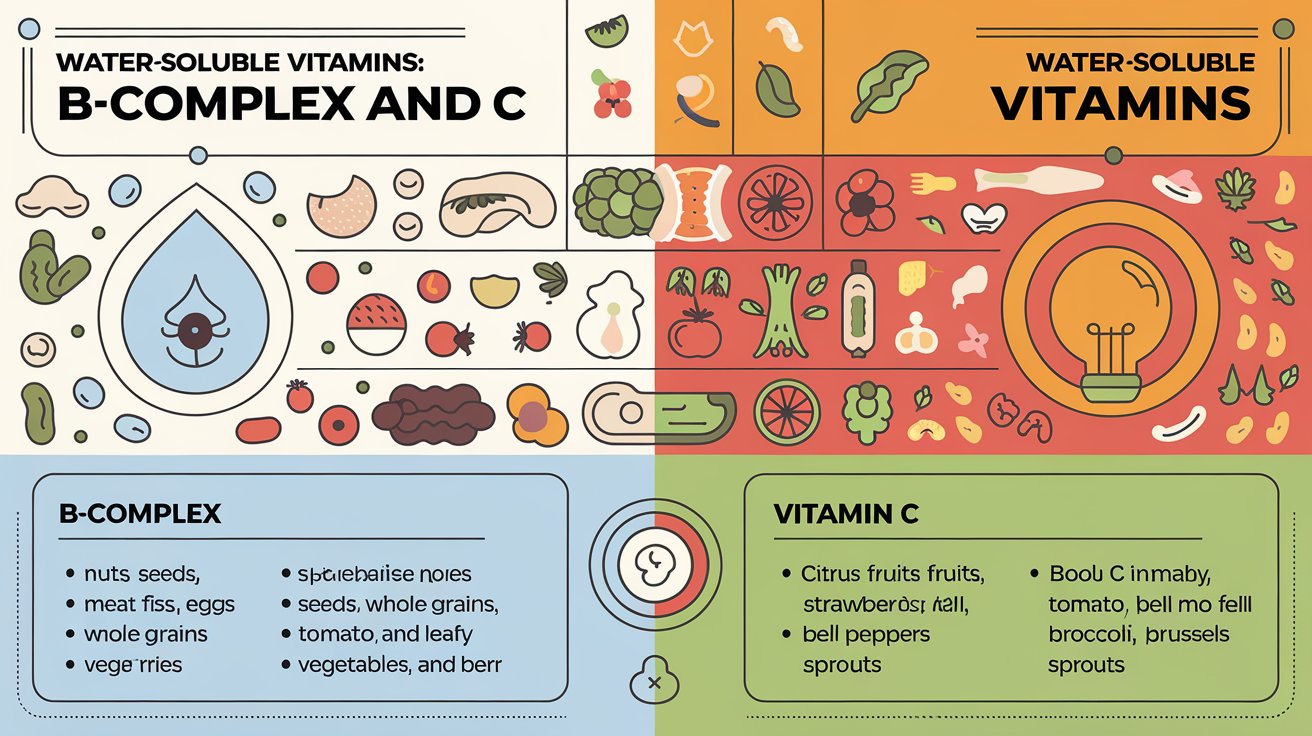
Vitamin C
- Functions: Vital for immune function, skin health, and the absorption of iron.
- Sources: Citrus fruits like oranges, lemons, and grapefruits, as well as bell peppers, strawberries, and tomatoes.
B Vitamins
- Functions: This group of vitamins (B1, B2, B3, B6, B12, and folate) plays key roles in energy production, red blood cell formation, and maintaining brain function.
- Sources: Whole grains, lean meats, fish, eggs, and dairy products provide B vitamins. Vegetarians should focus on fortified foods and supplements to meet their B12 needs.
Healthy Eating for Vegetarians and Vegans
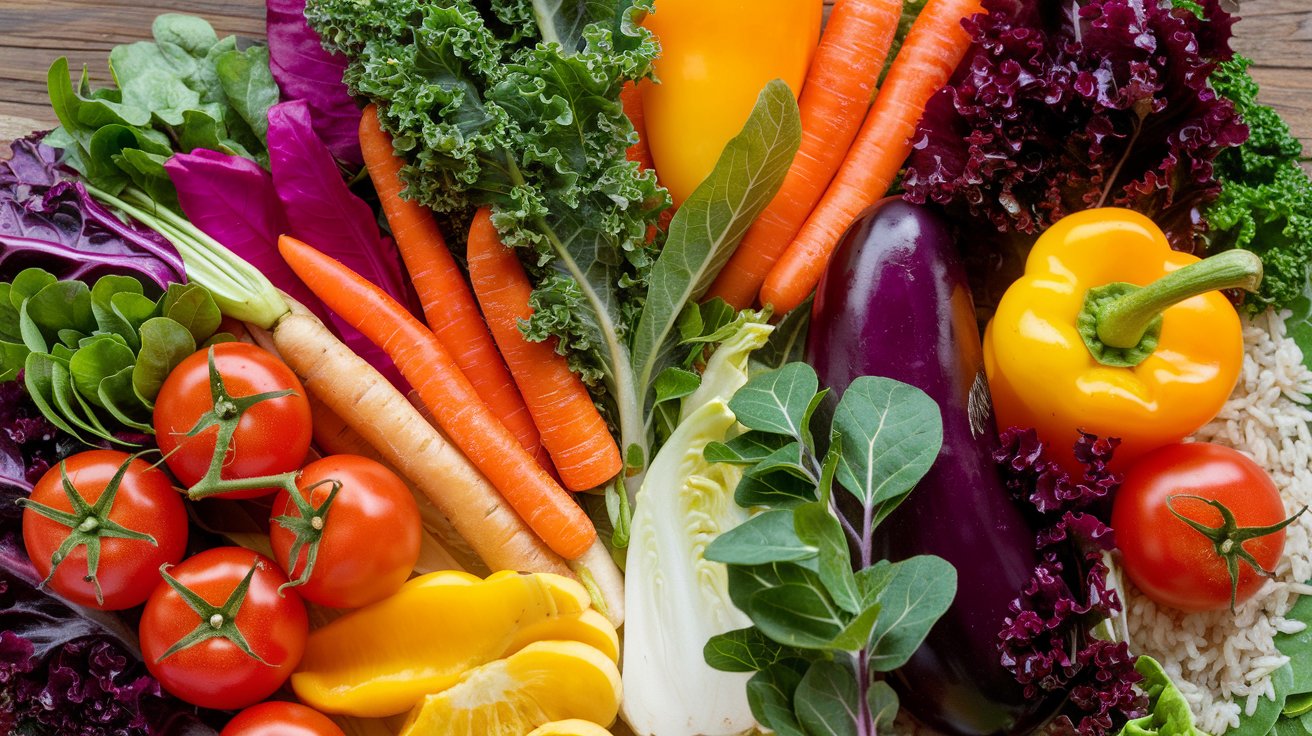
Maintaining a healthy diet as a vegetarian or vegan is entirely possible, but it requires careful planning to ensure you’re getting all the essential vitamins and nutrients. Since some vitamins, particularly Vitamin B12 and D, are primarily found in animal products, vegans may need to find plant-based alternatives or consider supplements.
Plant-Based Sources of Key vitamin and food chart and Nutrients
- Iron: Found in lentils, spinach, and fortified cereals. Pairing iron-rich foods with Vitamin C improves absorption.
- Calcium: Available in fortified plant milks, tofu, almonds, and dark green leafy vegetables.
- Vitamin B12: Fortified nutritional yeast, plant-based milks, and cereals are good options.
- Omega-3 fatty acids: Chia seeds, flaxseeds, and walnuts offer plant-based sources of these essential fats.
How to Supplement a Vegan Diet with Essential vitamin and food chart
Vegan diets often require supplements for nutrients like Vitamin B12, D, and Omega-3 fatty acids. Be sure to consult with a healthcare provider to tailor supplementation to your specific needs.
Supplements vs. Whole Foods: What’s Better?
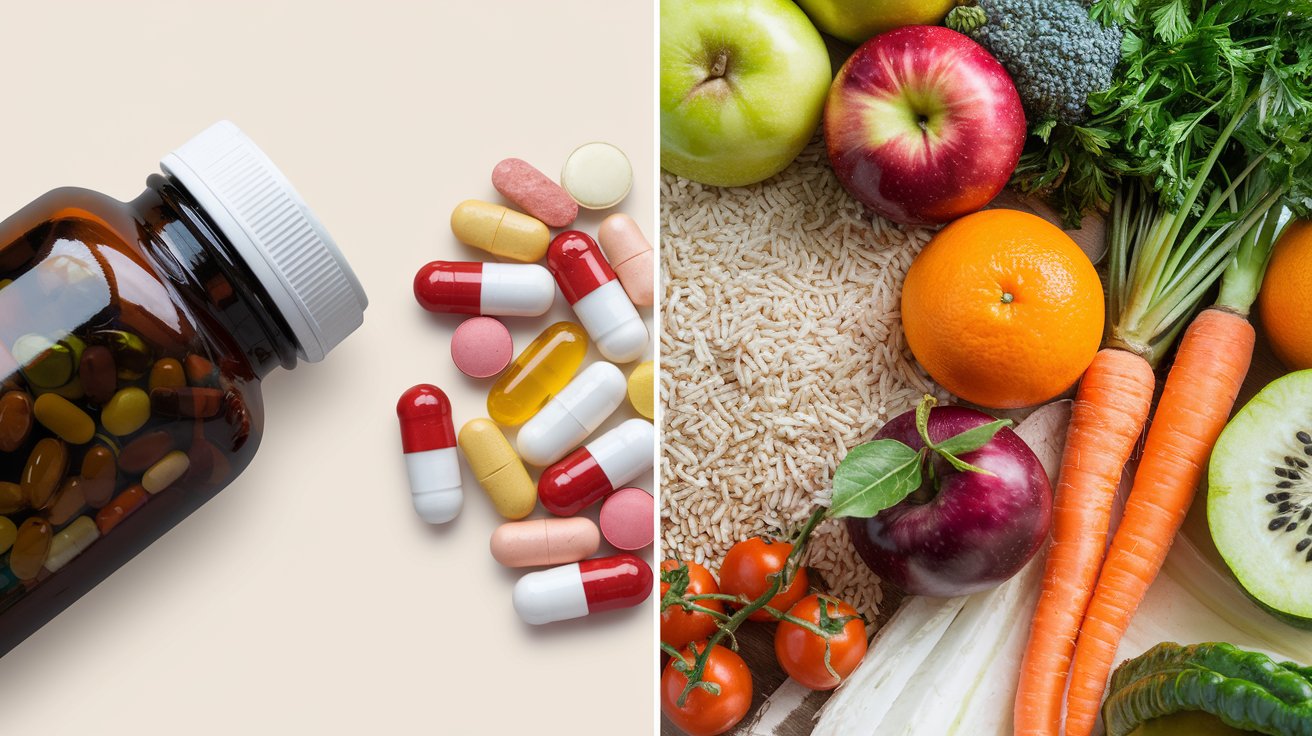
Many people wonder whether they should take vitamin supplements or rely on whole foods for their nutrition. Both have their pros and cons.
Pros and Cons of Vitamin Supplements
- Pros: Supplements are convenient and can help fill gaps in your diet, especially for people with restricted diets, like vegans or individuals with food allergies.
- Cons: Supplements can sometimes lead to an overdose of certain vitamins, particularly fat-soluble ones. It’s also easy to overlook the synergistic effects that whole foods provide.
How Whole Foods Provide More than Just Vitamins
Whole foods not only supply vitamins but also offer fiber, antioxidants, and other plant compounds that support overall health. When possible, prioritize getting your vitamins from whole foods, such as fruits, vegetables, grains, and lean proteins, to benefit from their full nutritional value.
Foods to Avoid: Nutritional Pitfalls
Certain foods can negatively affect how well your body absorbs vitamins and minerals. Processed and sugary foods, in particular, should be limited in a healthy diet.
Processed Foods and Their Impact on vitamin and food chart Absorption
Highly processed foods are often stripped of nutrients during manufacturing and can interfere with the absorption of vital vitamin and food chart. They may also contain unhealthy fats, sugars, and artificial ingredients that can lead to inflammation and poor health over time.
Sugar and Its Effects on Nutrient Balance
Too much sugar in your diet can cause a rapid rise in blood sugar, leading to a crash that makes you crave more sugar. This cycle can disrupt nutrient absorption and weaken your immune system. Opt for natural sources of sweetness like fruits, and minimize your intake of refined sugars.
Designing Your Own Daily vitamin and food chart
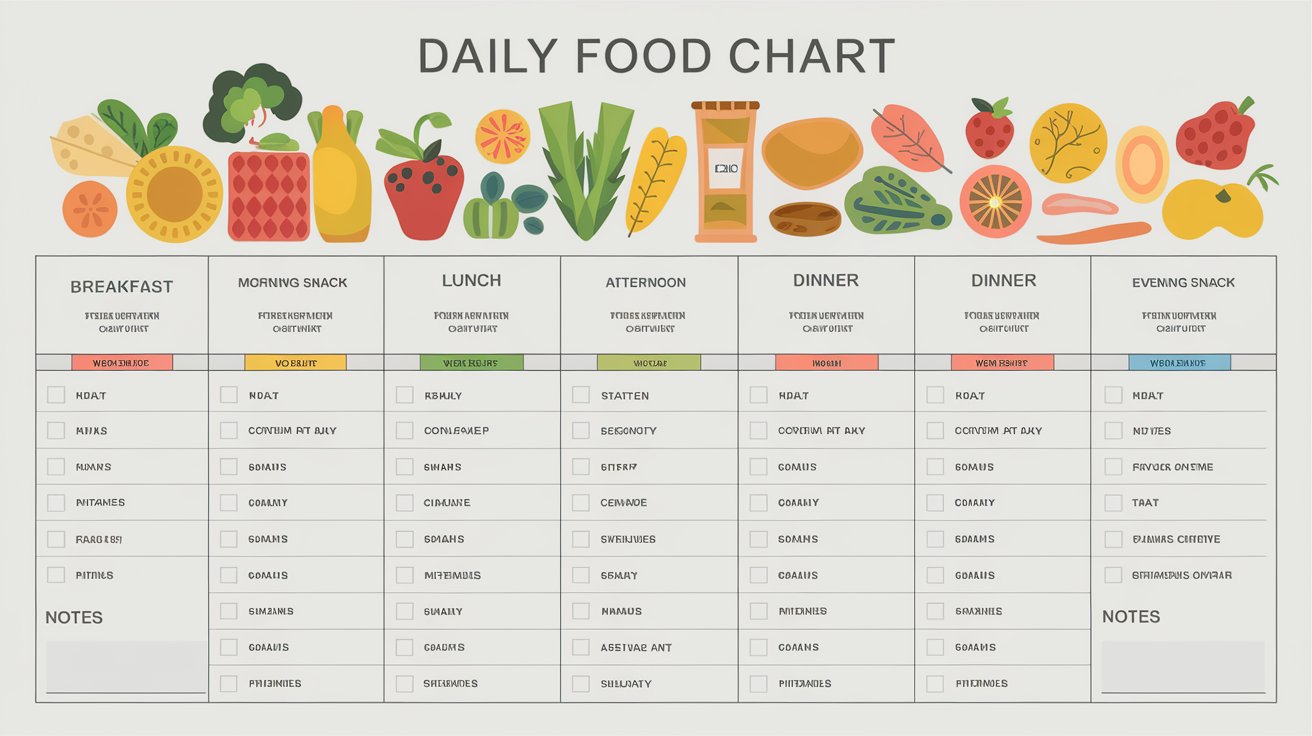
Creating a personal vitamin and food chart is a great way to ensure you’re meeting your nutritional needs. This chart should be based on your age, gender, and any specific health concerns.
Tailoring the Chart to Personal Health Needs
Start by identifying your daily vitamin and food chart and mineral needs based on guidelines from health authorities. Adjust the chart to reflect any specific conditions you may have, such as pregnancy, which requires extra folate and calcium.
Tips for Meal Planning and Preparation
- Variety is key: Include a range of colorful fruits and vegetables to cover a wide spectrum of vitamins.
- Batch cooking: Prepare meals in advance to save time and ensure that your meals are balanced.
- Use a food tracker: Consider using a nutrition app to track your vitamin intake and ensure you’re hitting your targets.
Special Considerations for vitamin and food chart for Pregnant and Nursing Mothers
Pregnancy significantly increases the need for specific vitamins and minerals to support both the mother and the developing baby.
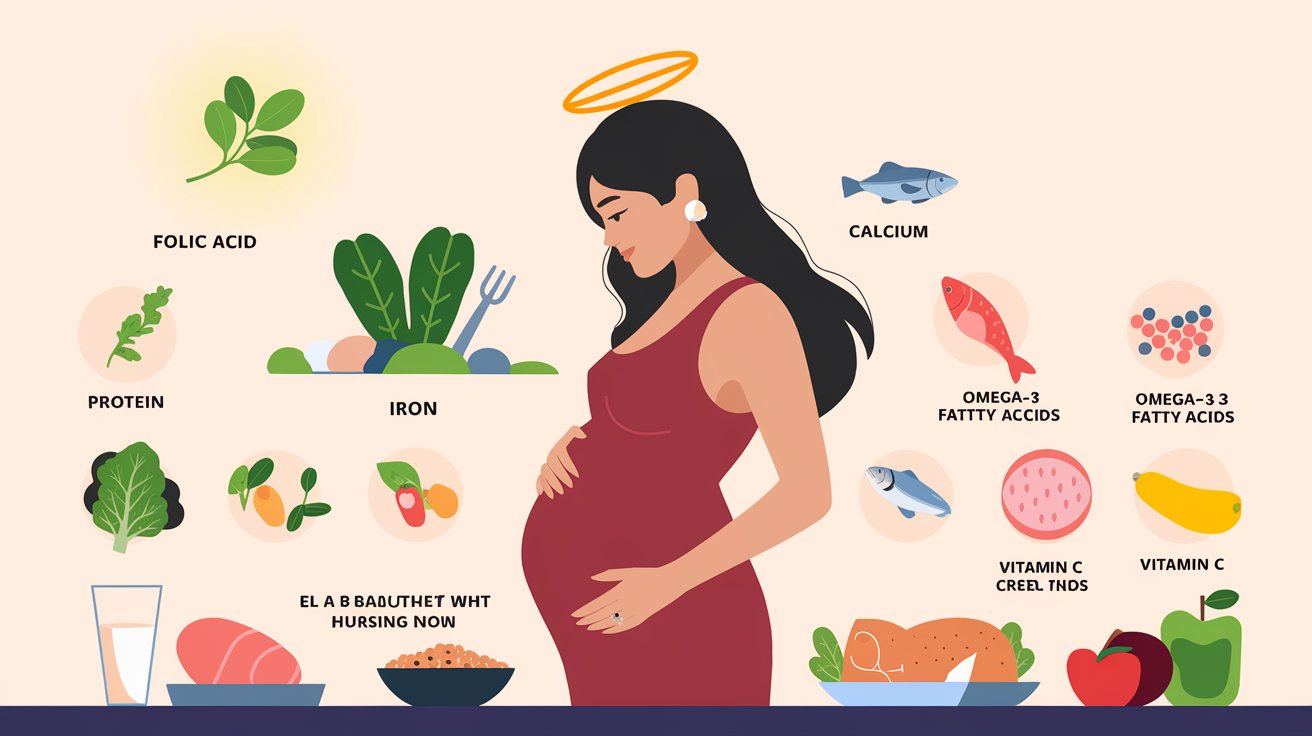
Increased Nutritional Needs
- Folate (Vitamin B9): Essential for preventing birth defects, folate is found in leafy greens, beans, and fortified grains.
- Iron: Pregnant women require more iron to support the increased blood volume and ensure oxygen delivery to the baby.
- Calcium plays a vital role in the development of a baby’s bones and teeth.
Vital vitamin and food chart for Fetal Development
In addition to folate, other key vitamins during pregnancy include Vitamin D, which supports bone development, and Vitamin A for cell growth.
Read Related Articles
Your Go-To Protein Food List: Eating for Strength and Energy
FAQ – Frequently Asked Questions about Healthy Eating, vitamin and food chart
What are the best sources of Vitamin C?
Vitamin C plays a key role in supporting immune health, maintaining skin, and aiding iron absorption. The best sources of Vitamin C include citrus fruits such as oranges, lemons, and grapefruits. Other excellent options are strawberries, bell peppers, broccoli, and kiwi. Incorporating a variety of these fruits and vegetables in your diet will ensure adequate intake of this essential vitamin.
How can I ensure I get enough vitamins on a vegetarian diet?
Getting enough vitamin and food chart on a vegetarian diet is achievable with careful planning. Focus on consuming a variety of plant-based foods rich in vitamins, such as legumes, nuts, seeds, and whole grains. Fortified foods like plant-based milk and cereals can provide nutrients like Vitamin B12 and D, which are harder to find in a plant-based diet. Additionally, pairing iron-rich foods with Vitamin C can improve iron absorption. If necessary, consult a healthcare provider for personalized advice or supplements.
Is it safe to take vitamin supplements every day?
Daily vitamin supplements can be beneficial if you have specific nutrient deficiencies or dietary restrictions. However, it’s important not to over-supplement, particularly with fat-soluble vitamins like A, D, E, and K, which can accumulate in the body and lead to toxicity. It’s always best to get your nutrients from whole foods when possible, and consult a healthcare professional before starting any supplementation routine.
What are the signs of vitamin deficiency?
Signs of vitamin deficiency can vary depending on which vitamin is lacking, but common symptoms include:
- Fatigue and weakness
- Brittle hair and nails
- Dry skin and cracked lips
- Poor wound healing
- Frequent infections
- Vision problems, particularly night blindness (for Vitamin A deficiency)
If you suspect you may have a vitamin and food chart deficiency, it’s important to consult a healthcare provider for proper diagnosis and treatment.
Can you overdose on vitamins?
Yes, it’s possible to overdose on certain vitamins, particularly fat-soluble ones (Vitamins A, D, E, and K), since they are stored in the body’s fat tissues and can accumulate to toxic levels over time. Water-soluble vitamins, like Vitamin C and B-complex, are less likely to cause harm since excess amounts are excreted in the urine. However, even these can cause side effects if taken in excessive doses. Always follow recommended daily intake guidelines and consult a healthcare professional before taking high-dose supplements.
Do cooking methods affect vitamin content in food?
Yes, cooking methods can impact the vitamin content in food. Water-soluble vitamins, like Vitamin C and B vitamins, are sensitive to heat, light, and water, so cooking methods such as boiling can reduce their levels. Steaming, microwaving, or lightly sautéing vegetables are better options to retain nutrients. Fat-soluble vitamins (A, D, E, and K) are generally more stable when exposed to heat, but cooking with healthy fats can help increase their absorption in the body.
No products found.
Conclusion: Empowering Your Health with a Daily Vitamin and Food Chart
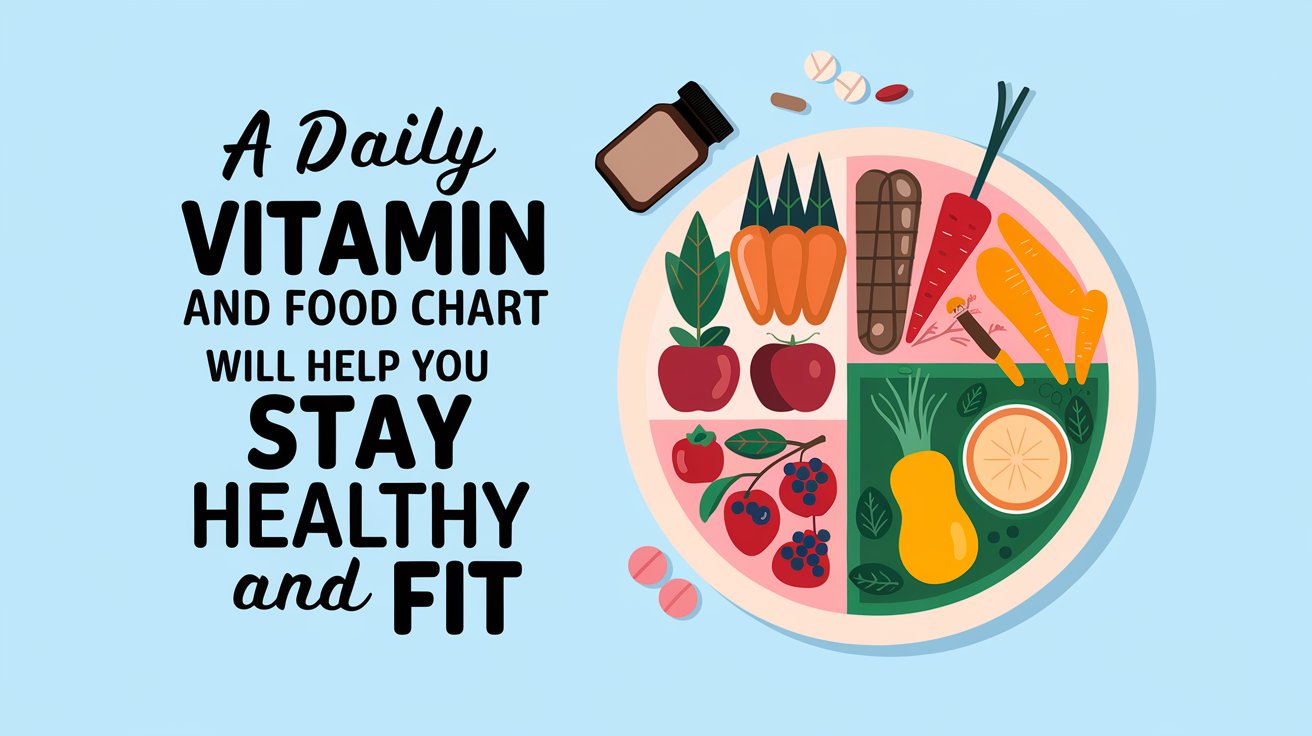
Recap of Key Points
Throughout this guide, we’ve explored the importance of vitamins in maintaining a balanced diet and overall health. From understanding the different types of vitamins—fat-soluble and water-soluble—to learning about the essential nutrients provided by various food sources, you now have the foundational knowledge needed to make informed dietary choices. Whether you’re tailoring your diet for age, lifestyle, or dietary preferences like vegetarianism, having a clear plan that includes a daily vitamin and food chart can simplify your path to better health.
Encouraging a Consistent Healthy Eating Habit
Maintaining a consistent approach is crucial for a healthy diet. By planning meals that are rich in vitamins and nutrients, and possibly incorporating supplements where needed, you’ll be setting yourself up for long-term success. A well-rounded diet doesn’t just prevent deficiencies; it empowers you with energy, better immunity, and overall wellness. Start by designing your own personalized vitamin chart today, and make healthy eating a sustainable habit for life.
Explore more Articles
List of all the Important vitamin and food chart you should include in your diet plan

Welcome to Merge Blog!
Dive into quick, nutritious recipes, expert health tips, local food finds, and the latest in nutrition. Let’s explore healthier living together!

I’m Divya Bharathi, the person behind MergeBlog. I’m a passionate food enthusiast sharing simple, nutritious recipes and tips for a balanced lifestyle. Join me on this delicious journey!
Divya Bharathi
SUBSCRIBE & FOLLOW
MUST-READ ARTICLES
Join the Newsletter
Dive into quick, nutritious recipes, expert health tips, local food finds, and the latest in nutrition. Let’s explore healthier living together!



